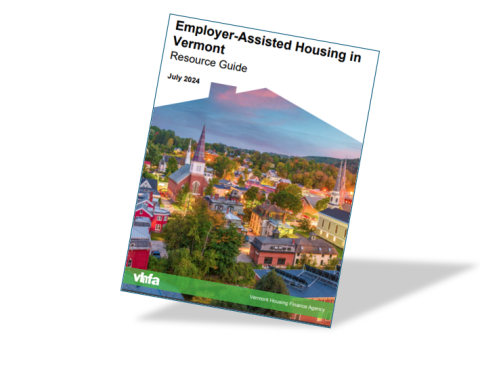Although employer-assisted housing has a long history in the U.S., the recent housing shortage has prompted new interest in this strategy for meeting the housing needs of Vermont workers. VHFA’s recently-released resource guide Employer-Assisted Housing in Vermont reviews demand- and supply-side options and best practices for employers looking to improve housing opportunities.

Vermont’s recent housing needs assessment highlights the myriad challenges facing the state’s housing and labor markets, including a deepening housing shortage with rippling economic and social impacts. This shortage and the ensuing jump in housing costs in Vermont make it increasingly difficult for employers to attract and retain the workers needed to maintain and grow their businesses. In response, a growing number of Vermont employers have sought out ways to expand housing opportunities for their employees and their communities.
The new guide describes six Vermont case studies, including Stonecrop Meadows launched through Middlebury College, National Bank of Middlebury, Porter Hospital and Summit Properties. Within walking distance to public transit and sitting on 35 acres, this development will serve the community at large. VHFA has allocated about $8 million in grant funding to help subsidize the cost of construction and facilitate the affordability of the new homes for average income households and awarded Low Income Housing Tax Credits that will generate about $9 million in equity.
The history of employer-assisted housing in Vermont and throughout the United States provides clear lessons learned. The most important of these lessons is that closely associating or tying employment and housing together can create an unhealthy dynamic and imbalanced power relationship that is harmful to employees. The new guide describes how employers today can expand housing opportunities while maintaining a healthy separation between an individual’s employment status and their access to housing.

